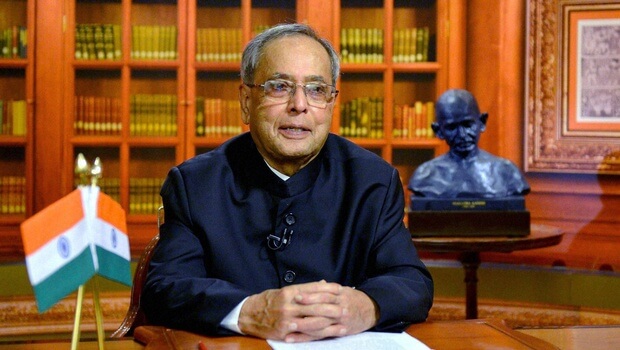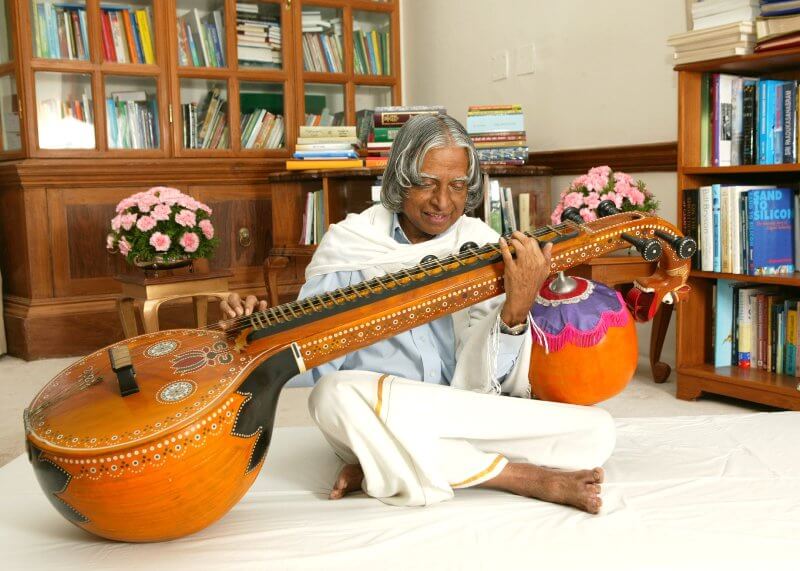The judiciary (also known as the judicial system, judicature, judicial branch, judiciative branch, and court or judiciary system) is the system of courts that adjudicates legal disputes/disagreements and interprets, defends, and applies the law in legal cases.
Supreme court of indiaA blog dedicated to Public Administration - comprehensive and wholesome knowledge. #UPSC #IAS #POLICY #IPS #IFS #IRS YOUTUBE CHANNEL: https://www.youtube.com/@jkstudycircle
President of India – Discretionary Powers You Never Knew Existed!
 Indian President is not a ceremonial head, unlike many other countries.
Indian President is not a ceremonial head, unlike many other countries.
All important decisions regarding the country are taken in the name of Indian President, though most of these will be based on the binding advice given by Council of Ministers(CoM), as per Article 74 of Indian Constitution.
But there are certain exceptions, where he can use his discretionary powers. Let’s learn more about that.
Discretionary powers of the President: Not based on the advice of CoM
The discretionary powers of the Indian president are not explicitly mentioned in the Indian constitution. But cases, where the Indian President do not act on the advice of CoM, can be understood if one carefully read the provisions related to the Indian President.
The cases of discretionary powers are as below:
#1: Suspensive Veto:
The President has discretionary power when he exercises suspensive veto ie. when he returns a bill (not money bill) for reconsideration of the parliament.
However if the bill is passed again by the Parliament with or without amendments and presented again to the President, it is obligatory for him to give his assent to the bill.
#2: Pocket Veto:
This is not a provision mentioned in the Indian constitution, but this is a possible situation when the President of India can use his discretionary power. In this case, the President neither ratifies nor reject nor return the bill, but simply keeps the bill pending for an indefinite period.
As the time limit within which the President has to take the decision with respect to a bill presented to him for assent, has not been mentioned in the constitution, in effect the inaction of the President stops the bill from becoming an act.
#3: President can seek information from Prime Minister:
Under article 78 the President enjoys the right to seek information from the PM regarding the administration of the affairs of the union.
Under the established convention, the President has the right to warn or encourage the Council of Minister (CoM) in the exercise of its power.
#4: Case of no sitting of both houses:
Under Article 85, the President can summon each House of Parliament to meet at such time and place as he thinks fit, to ensure that six months shall not intervene between its last sitting in one session and the date appointed for its sitting in the next session.
#5: Case of no majority:
When no political party or coalition of parties enjoy the majority in Lok Sabha, then the President has discretion in inviting the leader of that party or coalition of parties who in his opinion is able to form a stable government.
#6: Case of no-confidence with CoM- dissolving Loksabha:
It is for the president to decide if he should dissolve Loksabha or not when CoM loses the majority in Lok Sabha.
Note: The President can dissolve Lok Sabha only on the advice of CoM but the advice is binding only if the government is a majority government.
#7: Case of no-confidence with CoM- dissolving CoM:
It is for the president to decide if he should dissolve CoM or not when CoM loses the majority in Lok Sabha.
#8: Case of a caretaker government
A caretaker government does not enjoy the confidence of Lok Sabha and hence it is not expected to take major decisions but only to make the day-to-day administrative decisions. It is for the President to decide the day-to-day decisions.
The advice given by CoM binding on Indian President: Article 74

Article 74 of the Indian Constitution says that
- (1) There shall be a Council of Ministers with the Prime Minister at the head to aid and advise the President who shall, in the exercise of his functions, act in accordance with such advice:
Provided that the President may require the Council of Ministers to reconsider such advice, either generally or otherwise, and the President shall act in accordance with the advice tendered after such reconsideration.
- (2) The question whether any, and if so what, advice was tendered by Ministers to the President shall not be inquired into in any court.”
Powers exercised on the advice of CoM (non-discretionary powers)

President of India is vested with Legislative, Executive and Judicial powers. But as the advice given by CoM is binding on Indian President, in reality, most of these powers rest with the COM; but decisions are taken in the name of President of India. See some examples.
- President’s rule – He can rule the whole nation or individual states at times of emergency. The President can declare State, National and Financial Emergencies. Punjab, Jharkhand, Jammu and Kashmir and many other states have been under President’s Rule.
- Commander-in-Chief of Indian Armed forces – The President is the Commander-in-Chief of the Indian Armed Forces.
- The President appoints our State governors, Supreme Court and High Court Judges, and the Chief Justice.
- The President can summon and dissolve parliament sessions.
- A ‘bill’ passed in the parliament can become an ‘act’ only after the President’s approval.
- The President of India has the power to reduce the degree of punishment or pardon criminals – even death sentences can be absolved on appeal.
- The President is the head of Indian State while Prime Minister is the head of Indian Government.
- Ambassadors and High Commissioners representing our country are appointed by the President.
- President appoints the Chief Election Commissioner and other Election Commissioners.
- The President delivers the opening address for the first session of the parliament, as well as the first session of a newly elected government, defining the policies of the government.
- IAS or IPS officers (All India Services) by the President of India, based on the advice of UPSC.
The Executive
They contrast with figurehead presidents, common in most parliamentary republics, in which the president serves symbolic, nonpolitical roles (and often is appointed to office by parliament) while the prime minister holds all relevant executive power. A small number of nations, most notably Somalia, South Africa and Botswana, have both an executive presidency and a system of governance that is parliamentary in character, with the President elected by and dependent on the confidence of the legislature. In these states, the offices of president and prime minister (as both head of state and head of government respectively) might be said to be combined.
The above examples notwithstanding, executive presidencies are found in presidential systems and semi-presidential systems.
In order to prevent the abuse of power, checks and balances are implemented through the legislative and judiciary bodies. For example, in the United States one method is impeachment whereby the president can be held accountable if others deem their actions unconstitutional, with the most recent example being the impeachment trials of President Donald Trump.
Cut Motions: Policy Cut, Economy Cut, and Token Cut
 What is meant by policy cut, economy cut, or token cut motions?
What is meant by policy cut, economy cut, or token cut motions?
You might have noticed about the Demand for Grants while going through Indian Budget.
These are demands usually made in respect of the grant proposed for each Ministry.
But Parliament being the authority to check the expenditure of the government may not approve all demands.
Cut motions are motions in the parliament moved to reduce the amount of demand.
Cut motions
A motion may be moved to reduce the amount of a demand in any of the following ways:-
1. Disapproval of Policy Cut Motions
- A Disapproval of Policy Cut motion is moved so that the amount of the demand be reduced to Re.1.
- It represents the disapproval of the policy underlying the demand.
- A member giving notice of such a motion shall indicate in precise terms the particulars of the policy which he proposes to discuss.
- The discussion shall be confined to the specific point or points mentioned in the notice and it shall be open to members to advocate an alternative policy.
2. Economy Cut Motions
- An Economy Cut motion is moved so that the amount of the demand be reduced by a specified amount.
- It represents the economy that can be effected.
- Such a specified amount may be either a lump-sum reduction in the demand or omission or reduction of an item in the demand.
- The notice shall indicate briefly and precisely the particular matter on which discussion is sought to be raised and speeches shall be confined to the discussion as to how the economy can be effected.
3. Token Cut Motions
- A Token Cut motion is moved so that that the amount of the demand be reduced by Rs.100.
- This is to ventilate a specific grievance that is within the sphere of the responsibility of the Government of India.
- The discussion thereon shall be confined to the particular grievance specified in the motion.
Admissibility of cut motions

In order that notice of motion for reduction of the amount of demand may be admissible, it shall satisfy the following conditions, namely:-
- it shall relate to one demand only;
- it shall be clearly expressed and shall not contain arguments, inferences, ironical expressions, imputations, epithets or defamatory statements;
- it shall be confined to one specific matter which shall be stated in precise terms;
- it shall not reflect on the character or conduct of any person whose conduct can only be challenged on a substantive motion;
- it shall not make suggestions for the amendment or repeal of existing laws;
- it shall not refer to a matter which is not primarily the concern of the Government of India;
- it shall not relate to expenditure charged on the Consolidated Fund of India;
- it shall not relate to a matter which is under adjudication by a court of law having jurisdiction in any part of India;
- it shall not raise a question of privilege;
- it shall not revive discussion on a matter which has been discussed in the same session and on which a decision has been taken;
- it shall not anticipate a matter which has been previously appointed for consideration in the same session;
- it shall not ordinarily seek to raise a discussion on a matter pending before any statutory tribunal or statutory authority performing any judicial or quasi-judicial functions or any commission or court of enquiry appointed to enquire into, or investigate any matter: Provided that the Speaker may in his discretion allow such matter being raised in the House as is concerned with the procedure or stage of enquiry, if the Speaker is satisfied that it is not likely to prejudice the consideration of such matter by the statutory tribunal, statutory authority, commission or court of enquiry;
- it shall not relate to a trivial matter.
Speaker to decide admissibility
The Speaker shall decide whether a cut motion is or is not admissible under these rules and may disallow any cut motion when in his opinion it is an abuse of the right of moving cut motions or is calculated to obstruct or prejudicially affect the procedure of the House or is in contravention of these rules.
Notice of cut motions
If notice of a motion to reduce any demand for the grant has not been given one day previous to the day on which the demand is under consideration, any member may object to the moving of the motion, and such objection shall prevail unless the Speaker allows the motion to be made.
Difference between Full Budget and Vote on Account
 While studying Budget related topics, many are confused about the differences between full budget, interim budget, and vote on account. Don’t worry! We hope this post will clear all your queries!
While studying Budget related topics, many are confused about the differences between full budget, interim budget, and vote on account. Don’t worry! We hope this post will clear all your queries!
To understand the connection better, I recommend you to understand the following rule first.
Rule: Executive (Government) needs the approval of Legislature (Parliament) for spending!
Yes, the government cannot spend as it wishes!
Even though the government collects money from the public by means of various taxes and fees, for the expenditure of the same, it needs approval from another authority – ie. Legislature.
In the case of the Central government, the Legislature corresponds to the lower house of the Parliament ie. Loksabha.
Where is this rule (mandate) written? Answer: Constitution of India.
Article 266 of the Constitution of India mandates that Parliamentary approval is required to draw money from the Consolidated Fund of India. Besides, Article 114 (3) of the Constitution stipulates that no amount can be withdrawn from the Consolidated Fund without the enactment of a law (appropriation bill).
The Parliamentary Approval takes its time!
The full budget is usually passed only after long discussions. Even though the government (executive) seeks approval of expenditure for the next financial year (April 1 to March 31) in the current financial year itself, the approval from legislature takes its time.
Very often, discussion and voting of demands for grants and passing of Appropriation Bill go beyond the current financial year. This was precisely the case before 2016 when the budget was presented on the last working day of February, and it was difficult to get passed within the same financial year.
But the government needs money for its day to day functions…
Since Parliament is not able to vote the entire budget before the commencement of the new financial year, the necessity to keep enough finance at the disposal of Government.
A special provision is, therefore, made for “Vote on Account” by which Government obtains the Vote of Parliament for a sum sufficient to incur expenditure on various items for a part of the year.
Vote on Account
Vote on Account is a grant in advance to enable the government to carry on until the voting of demands for grants and the passing of the Appropriation Bill and Finance Bill.
This enables the government to fund its expenses for a short period of time or until a full-budget is passed. As a convention, a vote-on-account is treated as a formal matter and passed by Lok Sabha without discussion.
Vote on Account was frequently used until 2016 when the Budget was presented on the last working day of February. However, since 2017, the budget presentation date was advanced to February 1. This helped the executive to use almost 2 months time to get the full-budget passed in the same financial year. So, since 2017, Vote on Account is not usually used as part of the government budgeting process, unless in special cases like an election year.
Normally, the Vote on Account is taken for two months only. The sum of the grant would be equivalent to one-sixth of the estimated expenditure for the entire year under various demands for grants.
Can Vote on Account be granted for more than 2 months?
Yes. During election year or when it is anticipated that the main Demands and Appropriation Bill will take longer time than two months, the Vote on Account may be granted for a period exceeding two months.
For example, in 2019, Vote on Account is taken for 4 months.
Difference between Full Budget and Vote on Account
- Full Budget deals with both expenditure and revenue side but Vote-on-account deals only with the expenditure side of the government’s budget.
- The vote-on-account is normally valid for two months but a full budget is valid for 12 months (a financial year).
- As a convention, a vote-on-account is treated as a formal matter and passed by Lok Sabha without discussion. But passing for budget happens only after discussions and voting on demand for grants.
- A vote-on-account cannot alter direct taxes since they need to be passed through a finance bill. Under the regular Budget, fresh taxes may be imposed and old ones may go.
- As a convention, a vote-on-account is treated as a formal matter and passed by the Lok Sabha without discussion. But the full budget is passed only after discussions and voting on demand for grants.
What is an interim budget then?
An interim budget in all practical sense is a full budget but made by the government during the last year of its term – ie. just before the election. An interim Budget is a complete set of accounts, including both expenditure and receipts. But it may not contain big policy proposals.
Is it mandatory for the government to present vote on account instead of a full budget in an election year?
It is not mandatory for the government to present a vote on account in an election year.
Though the convention is to present an interim budget and get the fund required for spending via the vote on account route, the government (if it wishes so) can even go for a Full Budget and get the appropriation bills passed to get the finances.
However, during an election year, the ruling government generally opts for a vote-on-account or interim budget instead of a full budget. While technically, it is not mandatory for the government to present a vote-on-account, but it would be inappropriate to impose policies that may or may not be acceptable to the incoming government taking over in the same year.

